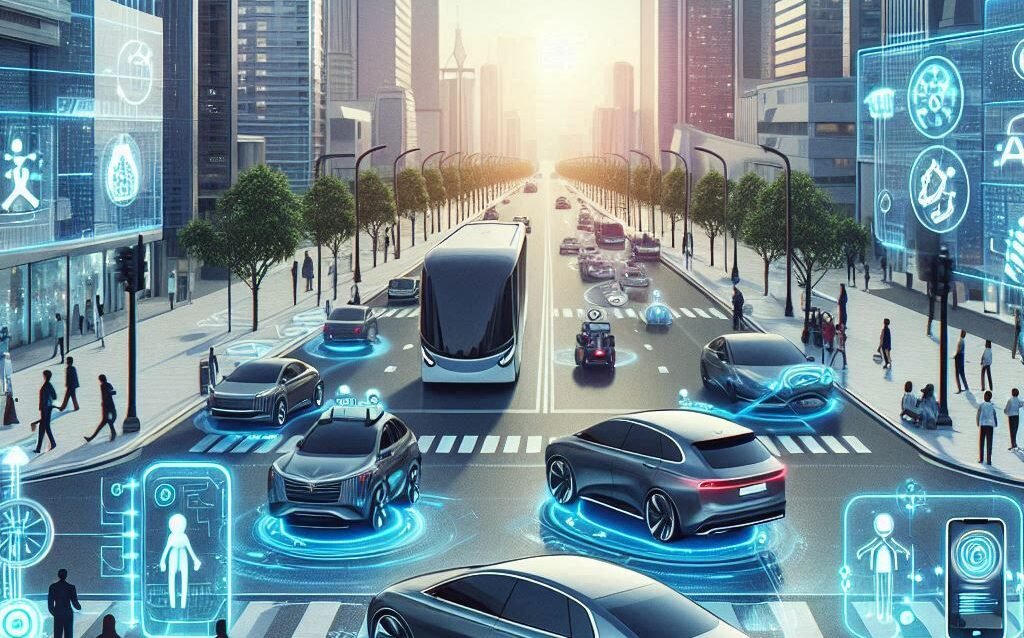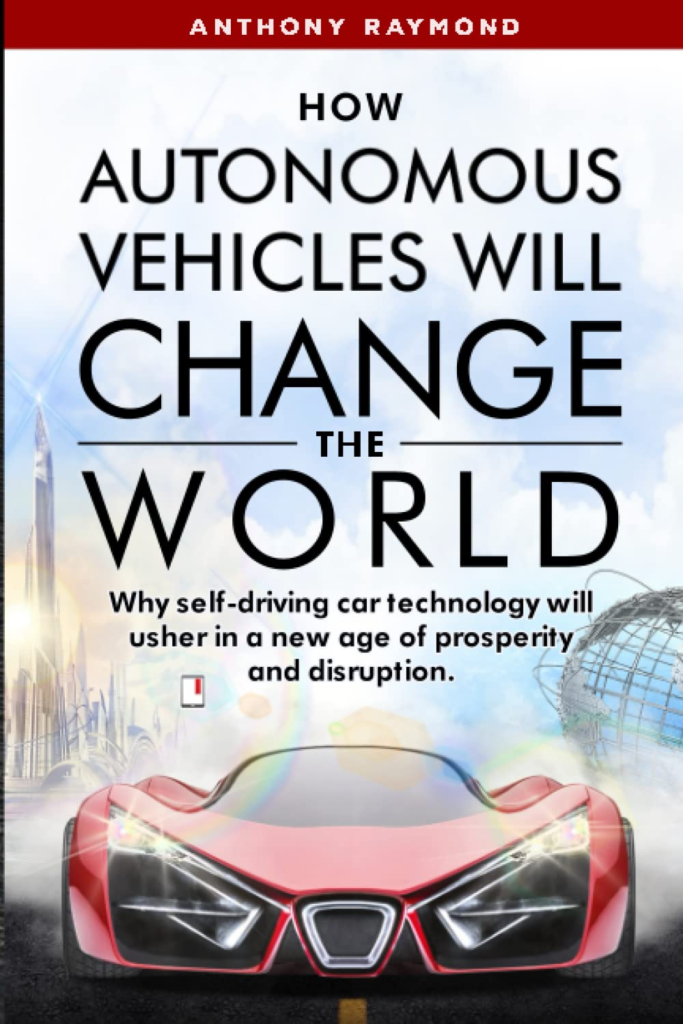Introduction to Self-Driving Taxis
Self-driving taxis represent a significant advancement in the realm of transportation, leveraging cutting-edge technology to provide automated passenger services. These vehicles are equipped with sophisticated sensors, cameras, and artificial intelligence systems that enable them to navigate roadways without human intervention. The goal of this technology is to create a safer, more efficient, and more accessible mode of transportation, which could reshape urban mobility as we know it.
The journey towards self-driving taxis can be traced back to the broader development of autonomous vehicles. Companies such as Waymo, Tesla, and Uber have been at the forefront of this revolution, investing heavily in research and development to enhance the capabilities of their autonomous systems. These vehicles utilize a combination of Lidar (Light Detection and Ranging), radar, and computer vision to interpret their surroundings in real time, make navigation decisions, and react to unexpected obstacles. As these technologies have evolved, self-driving taxis have emerged as a promising alternative to traditional ridesharing services.
Unlike conventional ridesharing, which typically relies on a human driver to operate the vehicle, self-driving taxis embody an entirely different business model. Riders summon these autonomous vehicles via a smartphone app, much like their human-driven counterparts. However, the absence of a driver alters the dynamics significantly—cost structures may change, insurance liabilities could shift, and operational efficiencies might improve. Moreover, the introduction of self-driving taxis could elevate the discussion around urban planning as cities adapt to the increasing presence of these vehicles.
This innovative mode of transportation has the potential to address various challenges associated with traffic congestion, pollution, and accessibility in urban environments. As the technology continues to develop and regulatory frameworks evolve, the self-driving taxi industry is poised to exert a transformative influence on the transportation landscape, redefining how we perceive mobility in the modern age.
(Purchase today by clicking on the image)
Potential Benefits of Self-Driving Taxis
Self-driving taxis are poised to revolutionize urban transportation, offering several potential benefits that could significantly impact city life. One of the foremost advantages is the reduction of traffic congestion. Autonomous vehicles are designed to optimize routes and improve traffic flow, potentially leading to fewer vehicles on the road during peak hours. This overall enhancement in traffic management could alleviate stress on existing infrastructure and improve journey times for all road users.
Furthermore, self-driving taxis contribute to decreased emission levels. As these vehicles are often electric or designed for fuel efficiency, their widespread adoption can lead to cleaner air and a smaller carbon footprint. With cities striving to meet environmental goals, the integration of self-driving taxis into public and private transport systems aligns closely with sustainable development initiatives.
Another critical benefit is increased safety on the roads. Human error is a leading cause of traffic accidents, and self-driving technology aims to minimize this risk. Equipped with advanced sensors and artificial intelligence, autonomous taxis can react faster than human drivers, reduce the likelihood of crashes, and potentially lower injury rates. This advancement in safety standards is a compelling reason for cities to embrace this technology.
Moreover, self-driving taxis enhance accessibility for individuals with disabilities, making transportation more inclusive. These vehicles can be designed with special features that cater to the needs of passengers requiring assistance, thus bridging the mobility gap often experienced by this demographic. The convenience of on-demand, accessible transport can greatly improve the quality of life for these individuals.
Lastly, the economic implications of implementing self-driving taxis are noteworthy. Cost savings can be realized for both consumers and businesses through reduced transportation expenses and increased efficiency. As self-driving technology gains traction, its potential to disrupt traditional taxi services could also lead to competitive pricing and better service delivery, ultimately benefiting urban dwellers.
Challenges and Concerns Facing Self-Driving Taxis
The introduction of self-driving taxis presents significant challenges that must be addressed before these autonomous vehicles can be fully integrated into the transportation industry. One of the primary technological hurdles involves ensuring the reliability and safety of self-driving systems. Autonomous vehicles must be capable of interpreting complex urban environments, which includes navigating through unpredictable traffic, diverse weather conditions, and pedestrian interactions. Continuous advancements in artificial intelligence and machine learning are necessary to enhance the decision-making capabilities of these vehicles. Furthermore, ensuring redundancy in critical systems is essential to mitigate the risks of system failures.
Alongside technological challenges, regulatory issues pose a considerable barrier to the deployment of self-driving taxis. Governments and regulatory bodies must develop comprehensive frameworks to govern the operation of these vehicles. This includes establishing standards for safety, liability, and insurance, in addition to creating protocols for accidents involving autonomous taxis. Coordination between various governmental agencies, industry stakeholders, and public interest groups is vital for crafting regulations that facilitate innovation while ensuring public safety.
Public perception also significantly influences the acceptance of self-driving taxis. Concerns about safety, privacy, and job displacement may hinder consumer trust in autonomous vehicles. Surveys have shown that many individuals harbor skepticism regarding the readiness of self-driving technology to operate safely in real-world conditions. Public awareness campaigns that highlight the benefits and safety measures of self-driving taxis are essential to foster a positive perception and address the apprehensions individuals may have.
Finally, ethical dilemmas surrounding the programming of self-driving taxis pose a unique challenge. Developers must navigate morally complex decisions regarding how autonomous vehicles should respond in emergency situations. Such decisions often involve trade-offs between the safety of passengers versus that of pedestrians or other road users. Addressing these concerns in a transparent manner will be necessary to gain public trust and pave the way for the widespread adoption of self-driving taxis in the transportation landscape.
The Future of the Transportation Industry with Self-Driving Taxis
The advent of self-driving taxis is poised to significantly transform the transportation industry, ushering in a new era characterized by enhanced efficiency and efficacy. As these autonomous vehicles become more prevalent, their integration into urban mobility systems will necessitate a comprehensive reevaluation of urban planning principles. Cities may need to adapt their infrastructure to accommodate a greater influx of self-driving vehicles, including dedicated lanes, improved traffic management systems, and optimized pickup and drop-off zones. This reorientation could ultimately lead to safer and more efficient urban environments, as the need for parking spaces diminishes with the shift to shared mobility.
In addition to altering urban landscapes, the emergence of self-driving taxis is expected to influence the future of public transportation. With more individuals opting for on-demand services offered by autonomous taxis, public transport systems may adapt their offerings to supplement these services, creating a more integrated approach to urban mobility. The potential for seamless connections between self-driving taxis and traditional transportation methods could result in enhanced convenience for users, fostering a more cohesive travel experience. Moreover, this integration may encourage a shift towards sustainability, as many self-driving taxis are designed to operate as electric vehicles, thereby reducing emissions in densely populated areas.
The traditional taxi industry will undeniably face challenges in light of self-driving technology. Many conventional taxi services may need to pivot their business models to remain competitive. This may involve embracing said technologies to improve their operational efficiency or providing unique value propositions that autonomous taxis might not offer. Furthermore, societal norms surrounding car ownership could shift with the widespread acceptance of self-driving taxis, promoting a culture of shared mobility instead of individual vehicle ownership. Such a transition could lead to decreased traffic congestion and pollution, resulting in an overall positive impact on the urban mobility landscape.





